Vigilance over bad debt essential
Nguyen Duc Thai Han, deputy director general at ACB, noted that revising growth targets attached to controlling bad debts has been causing banks many difficulties.
So far this year, ACB has set aside $43.4 million worth of credit packages, with reduced interest rates, to benefit both retail and corporate customers. New customers are being offered a 0.3 percentage point reduction, while regular customers are offered 0.2.
<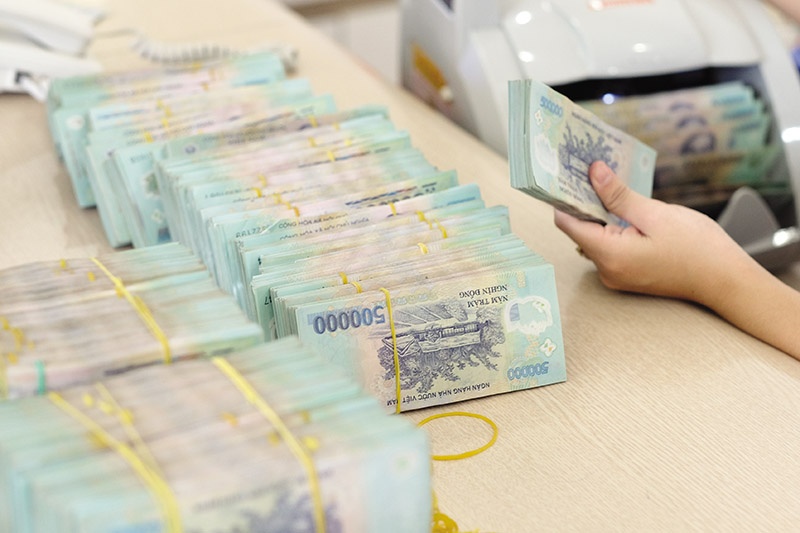 |
“With a newly released circular on debt rescheduling, part of the risk facing businesses has been passed to banks,” said Han.
In light of ACB’s first quarter financial statement, the bank’s bad debt surplus rose 31.5 per cent to touch $17.4 million, bringing its bad debt ratio from 0.74 per cent in late 2022 to 0.97 per cent in the latter part of the first quarter (Q1).
ACB's case is not rare. Tech-driven lender TPBank saw its bad debt ratio swell 84 per cent from $59 million to $86.9 million in late Q1, The volume of subprime debts soared to $52.1 million from just $16.7 million in late 2022, and doubtful debt volume spiked 64 per cent.
| Control of bad debts and raising credit quality are key tasks in the credit institution restructuring process. |
As such, TPBank’s current bad debt ratio stands at 1.45 per cent, compared to 0.84 per cent in late 2022.
At MB, the lender saw its bad debt volume rise 68 per cent to reach $36.74 million in late Q1, in which the subprime and doubtful debt groups also rose sharply, bringing the bank’s bad debt ratio from 10.9 per cent in late 2022 to nearly 1.76 per cent.
Ho Chi Minh City-based lender OCB also faced a 51 per cent spike in bad debt volume to surpass $17.4 million, in which subprime debts rose 54 per cent, doubtful debts soared 55 per cent and its bad debt ratio rose from 2.2 to 3.3 per cent.
At ABBank, the bad debt ratio inched up from 2.88 per cent in late 2022 to around 4.03 per cent in late Q1, with a 35 per cent hike in bad debt volume.
Among the state lenders, BIDV witnessed a more than 40 per cent spike in its on-balance sheet bad debt volume, reaching $1.07 billion in late Q1, bringing the bank’s bad debt ratio from 1.19 per cent in late 2022 to 1.59 per cent in late Q1.
At Vietcombank, the market leader saw bad debt volume rise more than 27 per cent in Q1 to reach $43.2 million, with the bad debt ratio rising slightly from 0.68 per cent in late 2022 to 0.85 per cent.
A newly released report by Viet Dragon Securites (VDSC) suggests the global liquidity crisis has not worsened since April, while the high inflation facing western countries has dipped, matching investors’ expectations.
In the domestic market, the government continues to untangle knots in the real estate and financial markets to unlock the flow of capital, with moves on debt payment extension and debt rescheduling. “However, it might take some time to generate actual practical results,” said VDSC analysts.
Nguyen Thi Hong, Governor of the State Bank of Vietnam (SBV), noted that control of bad debts and raising credit quality are key tasks in the credit institution restructuring process.
“The SBV has come up with a suite of measures to foster inspection and supervision of credit institutions to ensure safe operation and drive down the level of risk,” Hong said.
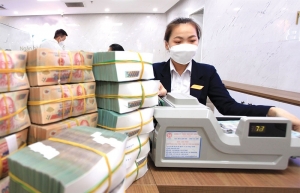 | Rising bad debt threat looms large Despite a bright business outlook, non-performing loans are causing significant concerns to banks amid a challenging environment in both the domestic and global market, according to industry experts. |
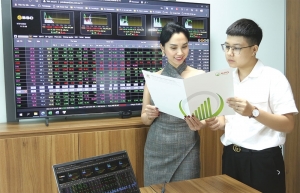 | Growing bond market illustrating bad debt snags While the bad debt market in Vietnam is still in its infancy and positive conditions have converged, stronger steps need to be taken. |
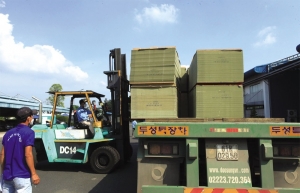 | VAT refund delays cause fear of bad debt for wood groups As VAT refunds represent a crucial part of the cash flow of timber processors, the current delay is throwing a wrench in the operations of woodchip, furniture, and other timber-based producers, leading related associations to call for easier regulations. |
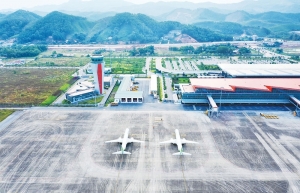 | Utilising national advantages with crucial infrastructure Small airports and dual-use airports are expected to be valuable infrastructure fulcrums for many remote localities to attract investment and exploit the advantages of tourism, if selected and added to the plan and early investment implementation. |
What the stars mean:
★ Poor ★ ★ Promising ★★★ Good ★★★★ Very good ★★★★★ Exceptional
Related Contents
Latest News
More News
- Tax sector wraps up 2025 and sets priorities for next year (December 25, 2025 | 14:00)
- A tipping point for digital and hybrid wealth management in Vietnam (December 23, 2025 | 13:33)
- $250 million deal targets women-owned SMEs, sustainable agriculture (December 22, 2025 | 17:40)
- Stock market posts resilient 2025 performance (December 19, 2025 | 18:17)
- Citi Vietnam receives 2025 AmCham CSR recognition (December 19, 2025 | 16:35)
- As global green supply chain reshapes, will Vietnam be left behind? (December 19, 2025 | 08:00)
- Banks gear up for massive capital increases (December 18, 2025 | 17:04)
- Securing capital and efficiency for Vietnam’s 2026-2030 growth ambitions (December 17, 2025 | 10:00)
- Energy sector in need of blended finance mechanisms (December 17, 2025 | 09:00)
- Vietnam still has room to mobilise capital for sustainable growth (December 17, 2025 | 08:57)

 Tag:
Tag:



























 Mobile Version
Mobile Version